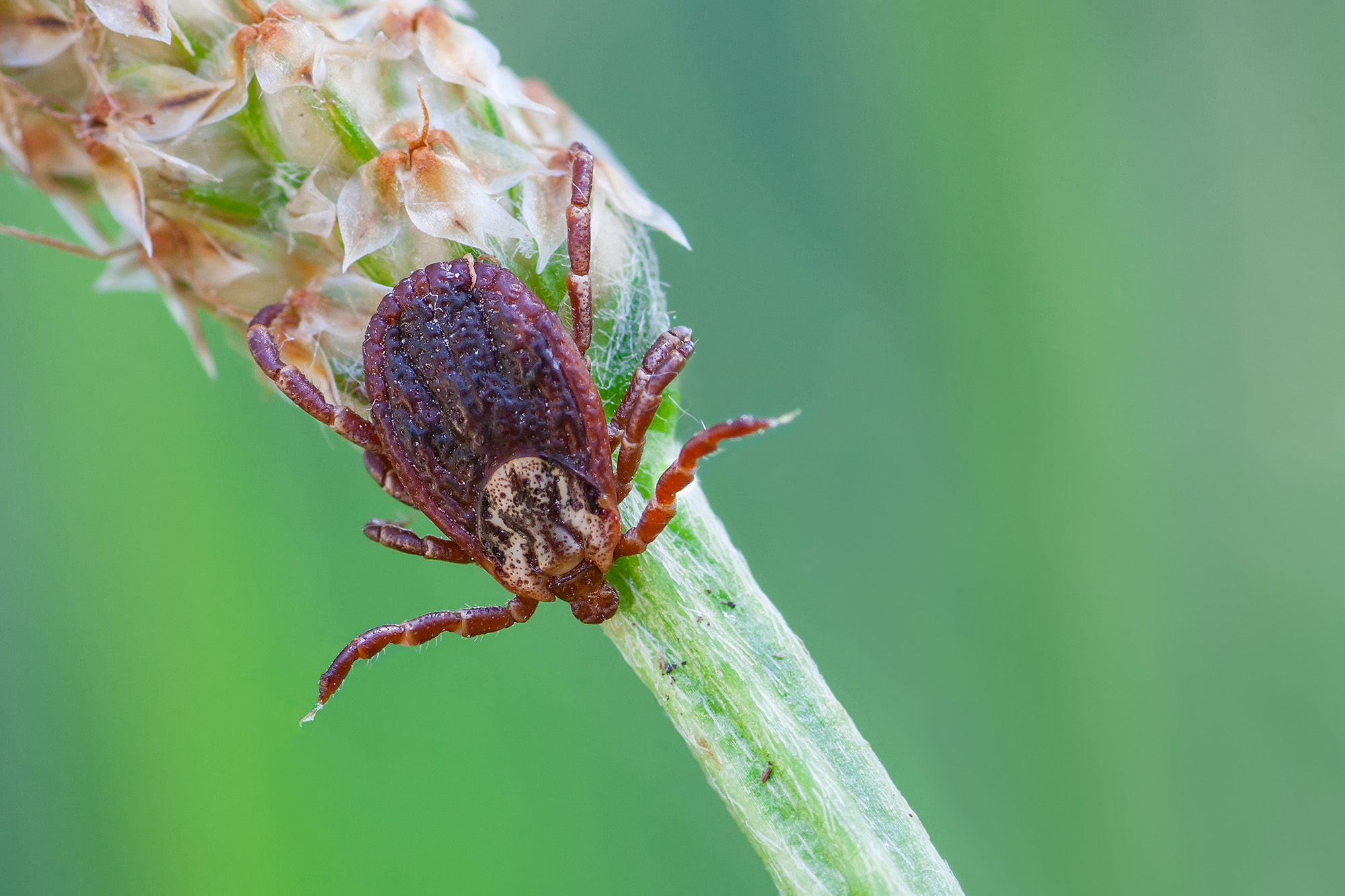One of the most important items to note on the list of emerging insects in April is the start of tick season. It usually begins in early April and will continue until temperatures climb in early summer.
Fortunately, the virus that causes Lyme disease, the most commonly feared and most dangerous tick-borne illness, is not present in wild ticks in Colorado. There has never been a confirmed case of Lyme disease originating from a tick-bite in Colorado, according to the Colorado State University Extension Office.
However, there are a number of other illnesses that can be caused by tick bites in Colorado, including Colorado tick fever, Rocky Mountain spotted fever, Tick-borne relapsing fever, and Tularemia.
The best way to avoid these illnesses is to avoid being bitten by ticks. Avoid tick habitats like grassy and brushy areas in spring, wear protective clothing, use tick repellent, and conduct thorough tick checks whenever you’ve been in areas where ticks may be present.
Fortunately, Colorado’s most common tick, the Rocky Mountain wood tick usually takes 12-24 hours to start feeding once it’s found a host. So a close inspection of your skin and the prompt removal of any ticks you might have picked up can be an effective way to avoid tick-borne illness.
There are a number of other insects on the The Colorado State University Extension Office’s extremely handy calendar listing all the pests in the Denver area you should keep an eye out for around your home and garden.
Here are the rest of the notes on what you might see emerging around your home in the Denver area in early and late April…
Denver Area Pests of Early April
Household/Miscellaneous Insects
- Boxelder bugs, elm leaf beetles, cluster flies: Overwintered adults become increasingly active in and around homes during warm periods.
- Carpet beetles: Early spring is often the period when adult stages are most frequently encountered in homes.
- Millipedes: Nuisance movements into homes occurs following wet weather.
- Tick season: Tick season usually has started and usually persists until high temperatures occur in early summer.
- Ants: Foraging ants in homes are common until temperatures allow them to seek food outdoors.
Trees/Shrub Insects
- Ips beetles: Major Ips beetle flights are likely to have started by this time and may threaten at risk spruce and pines.
- Aphids on fruit trees: Spray oils on dormant trees to kill overwintered aphid eggs.
- Cooley spruce gall: Controls are best applied before the insects make the egg sack in late April.
- Zimmerman pine moth: Overwintered larvae remain exposed on the trunk and can be controlled at this time.
- Borers: Remove and destroy damaged tree limbs and canes infested with borer larvae before insects emerge.
- Honeysuckle witches’ broom aphid: Prune out old, damaged terminals that contain eggs.
- European elm bark beetle: Pruned elm wood and logs should be destroyed prior to beetle emergence.
- Conifer sawflies: Larvae feed on older growth of various pines. Lawns Denver billbug: Overwintered larvae may damage roots of turfgrass.
- Turfgrass mites: Clover mites continue and banks grass mites begin to increase in droughty areas.
- Sod webworms, cutworms: Damage to lawns by webworms and cutworms begin at this time.
- Nightcrawlers: Tunneling activities and associated lawn lumps continue.
- Midges: Non-biting midges emerge from ponds and mating swarms may be observed over lawns.
Denver Area Pests of Late April
Tree/Shrub Insects
- Brownheaded ash sawfly: Watch for pin-hole feeding wounds prior to peak feeding damage. Swarms of adult insects may be observed and eggs laid in leaves.
- Cooley spruce gall: Insects continue development and usually begin to produce egg sack in late April.
- Zimmerman pine moth: Overwintered larvae will may begin to move into trunk over the next few weeks.
- Lilac/ash borer: Flights of adult moths may begin.
- Poplar twiggall fly: Adults emerge and begin to lay eggs in emerging aspen shoots.
- European elm bark beetle: Preventive sprays should be completed before adults emerge and fly.
- Pinyon tip moth: Larvae remain exposed on bark and can be controlled at this time
- Spider mites on pines: Oligonychus subnudus populations may increase rapidly on ponderosa and other susceptible pines
- Spiny elm caterpillar: Small colonies of these caterpillars may be seen on willow, hackberry, aspen, elm and other trees.
- Douglas-fir beetle: In forested areas, adult emergence, flights and tree attacks may begin.
- Hawthorn mealybug: Overwintered stages on trunk move to twigs and feed.
- Walnut twig beetle: Adults move from overwintering sites on trunk to intiate tunnels in twigs, branches.
Garden
- Spinach leafminer: Egg laying and tunneling begins in older spinach foliage.
What to do if you need help:
Here at Pure Pest Co. we’re always ready, willing, and able to help keep your home pest free. Give us a call at 720-325-4500 or contact us through our website to schedule your service today!







